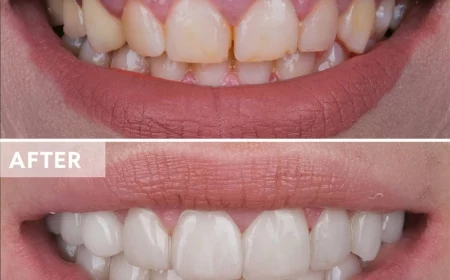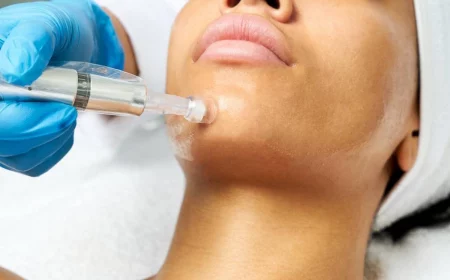Thinking About Snake Bites? Here’s What a Piercing Pro Wants You to Know
Over the years, I’ve seen piercing trends come and go, but some just have staying power. Snake bites are definitely one of them. We’re talking about two separate piercings, placed symmetrically on your lower lip, that make a really bold statement. But let’s be real—they’re a serious commitment, not just a spur-of-the-moment fashion choice.
In this article
- Why Placement is Everything
- The Piercing Procedure: What to Expect in the Chair
- The Financial Commitment: What to Budget For
- Choosing the Right Jewelry (This Is Important!)
- The Healing Journey: A Realistic Timeline
- Your Aftercare Routine (Keep It Simple!)
- Troubleshooting: Irritation vs. Infection
- Final Thoughts
- Galerie d’inspiration
These piercings live in one of the most active and sensitive areas of your body: your mouth. They’re going to affect how you eat, talk, and even smile, especially at first. Getting them done right and caring for them properly is the only way to make sure they look amazing without causing problems down the road. My goal here isn’t to scare you off. It’s to give you the honest, practical info I’d share with anyone sitting in my chair. We’ll cover everything from anatomy to jewelry that actually protects your teeth and gums.
Why Placement is Everything
Okay, let’s get into the nitty-gritty. Your lips aren’t just simple flaps of skin; they’re made of a complex muscle (called the orbicularis oris) that controls all your expressions. A true professional doesn’t just jam a needle through. We have to think about how the jewelry will sit when your face is relaxed versus when you’re smiling or talking.

Lip tissue is also packed with blood vessels. A skilled piercer knows how to navigate this landscape to keep bleeding and bruising to a minimum, which is exactly why you should never, ever let an untrained friend do this for you. We’ll spend a good amount of time marking the piercing sites, having you smile and relax your face over and over. The goal is perfect symmetry that complements your unique facial structure.
Ideally, the piercings are placed low enough so the flat-back discs inside your mouth can “nestle” into the little groove where your lower lip meets your gum. If they’re placed too high, the jewelry will constantly rub against your gums. Over time, this friction can cause gum recession—and gum tissue doesn’t grow back. I’ve seen clients come in with serious gum damage from poorly placed piercings, and it’s a risk we work hard to avoid.
The Piercing Procedure: What to Expect in the Chair
A professional piercing should feel calm, sterile, and precise. Here’s a rundown of what the experience should look like at any reputable studio.
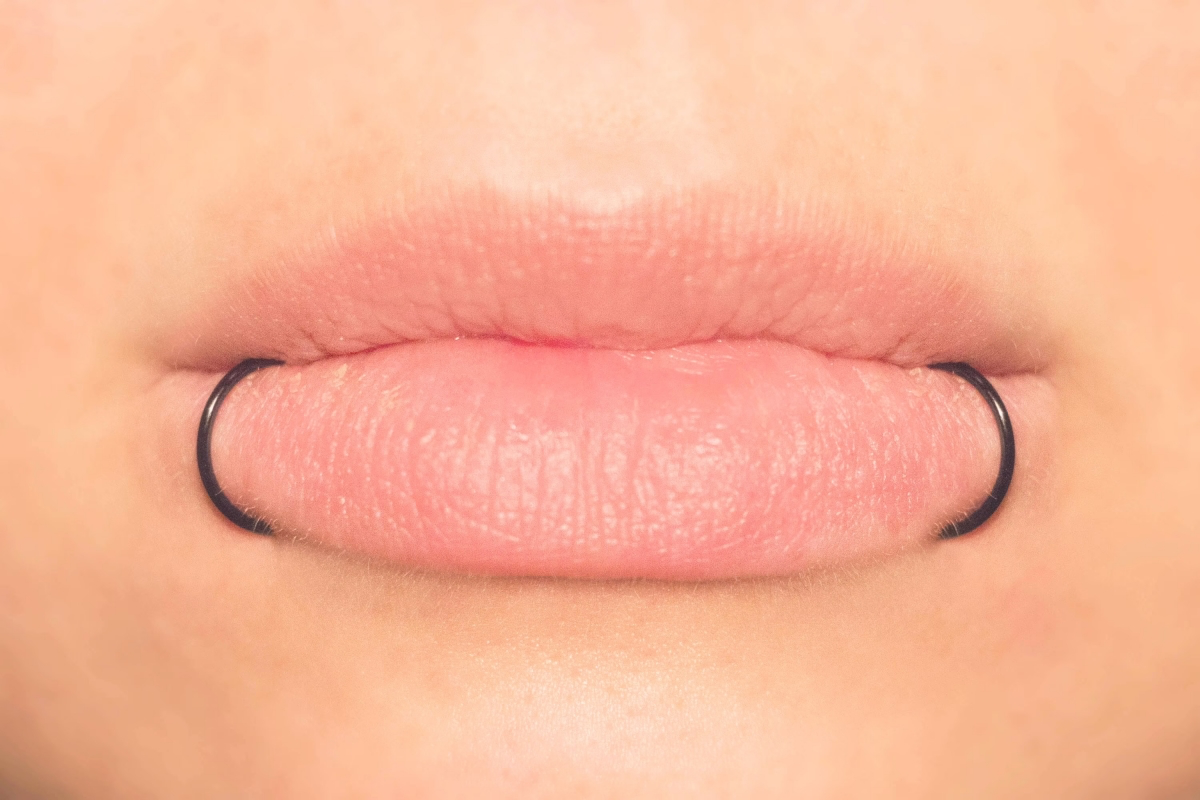
First, we talk. I’ll check out your lip anatomy, look for any prominent vessels, and we’ll discuss jewelry. You’ll fill out a consent form, which is standard practice. Once in the sanitized piercing room, you’ll rinse with an antiseptic (but alcohol-free!) mouthwash. Then, I’ll glove up and start marking.
This is the part that often takes the longest, and for good reason! Using a sterile skin marker, I’ll place two tiny dots on your lower lip, measuring carefully to get them just right. I’ll have you look in a mirror, talk a bit, and make some expressions. We adjust until you are 100% happy with the placement.
When it’s time for the piercing itself, I’ll ask you to take a deep breath in and exhale slowly. On the exhale, a hollow, single-use needle goes through in one quick, fluid motion, immediately followed by the jewelry. It’s over in seconds.
So, does it hurt? On a pain scale of 1 to 10, most people put snake bites at a solid 5-7. It’s a sharp, intense pinch—definitely more than a lobe piercing, but over way faster than a tattoo line. Your eyes will probably water. That’s a totally involuntary response! We’ll take a breath, and then do it all again on the other side.
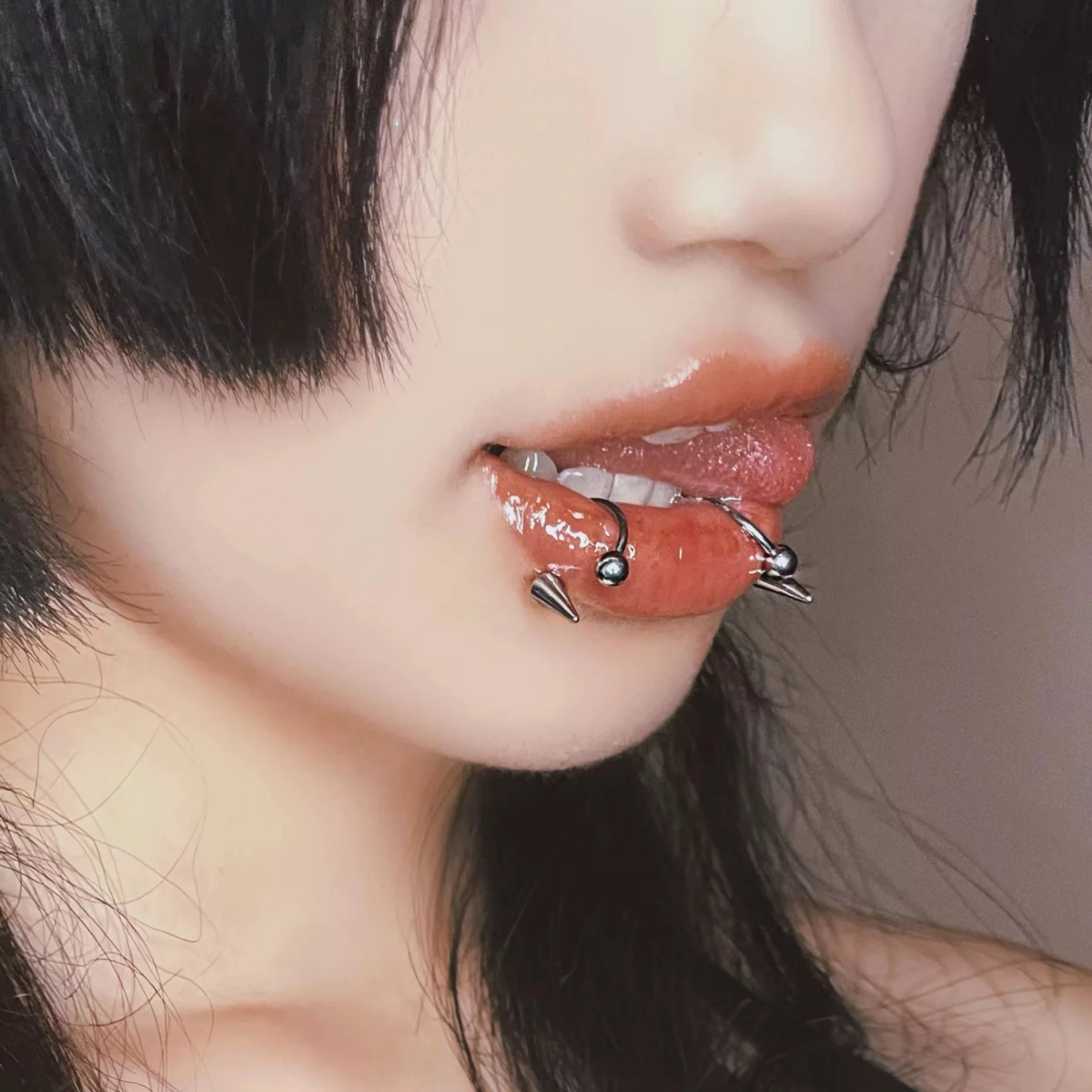
The Financial Commitment: What to Budget For
Getting snake bites isn’t a one-time cost, and it’s smart to plan ahead. The price can vary a lot based on the studio’s location and the piercer’s experience, but here’s a realistic breakdown:
- Piercing Fee: Expect to pay anywhere from $60 to $120+ for the pair. This is for the service itself.
- Initial Jewelry: This is a separate cost. For quality, implant-grade titanium labret studs, you’re looking at $30 to $60+ per stud. Yes, you need two!
- The Downsize: After a month or so, you’ll need shorter posts. Some shops charge a small fee ($10-$20) for the service, while others just charge for the new, shorter labret posts themselves.
All in, you should probably budget around $150 to $250+ to get it all done right from start to finish.
Choosing the Right Jewelry (This Is Important!)
The jewelry you start with is basically a medical implant designed for healing, so this isn’t the time to cheap out.

For new snake bites, the only acceptable option is a flat-back labret stud. Hoops and rings are a hard no for healing; they move around too much, causing irritation and messing up the piercing angle. A flat disc sits flush inside your lip, minimizing contact with your teeth and gums.
Materials That Won’t Betray You
- Implant-Grade Titanium (ASTM F-136): This is the gold standard. It’s biocompatible, nickel-free, and the same stuff used in surgical implants. It’s your safest bet.
- Niobium: Another fantastic, hypoallergenic option that’s very similar to titanium.
- 14k or 18k Solid Gold: If you love gold, make sure it’s SOLID, not plated. The alloy also needs to be nickel-free and specifically designed for body jewelry.
A quick heads-up on “Surgical Steel”: This is mostly a marketing term. It covers a bunch of different alloys, and many contain enough nickel to cause a reaction. If a studio can’t tell you the exact implant-grade standard of their steel (like ASTM F-138), just walk away. Honestly, titanium is better for healing anyway.
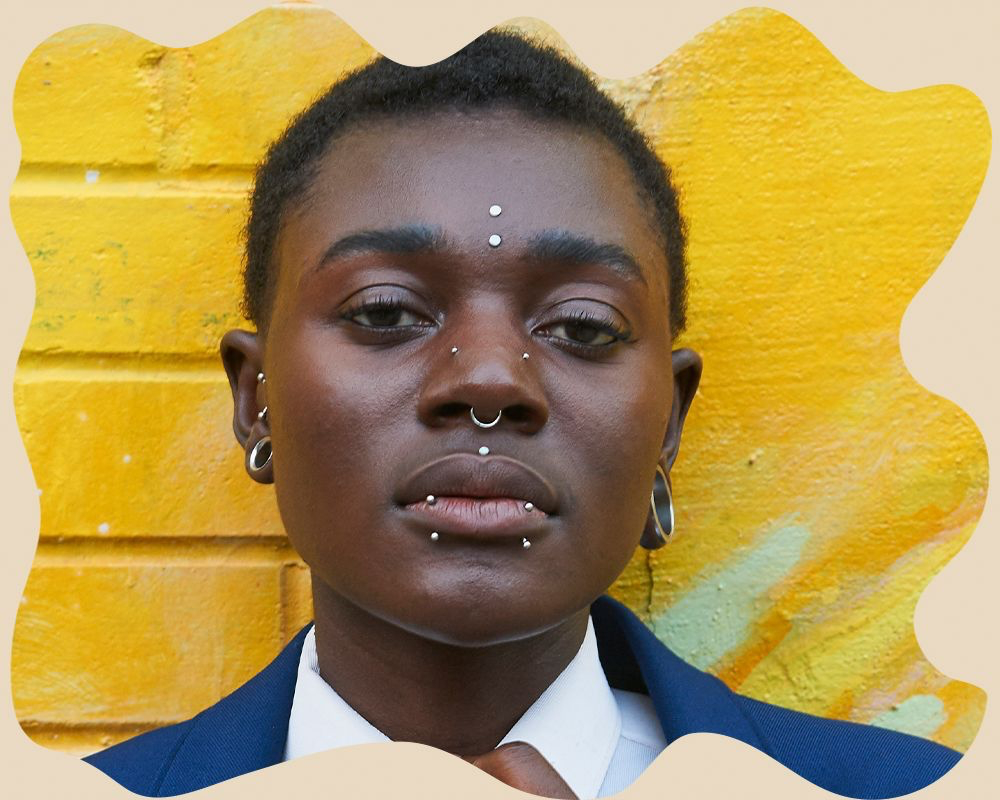
The Downsize: Your Most Important Follow-Up
Your first labret posts will be intentionally long to make room for swelling. But after 4 to 8 weeks, you absolutely must go back to your piercer for a downsize. This isn’t optional! Once the swelling is gone, the long bars will catch on everything and can start damaging your teeth and gums. We swap them for shorter posts that fit snugly.
By the way, the downsize is usually quick and painless. We have tools that make it super smooth, and trust me, it feels so much better to get those long starter bars out of there!
The Healing Journey: A Realistic Timeline
Full healing for snake bites can take 6 months or even longer. The outside might look fine after a few weeks, but the tissue on the inside is still maturing. Patience is key.
- Week 1-2 (The Puffy Stage): Expect significant swelling and tenderness. Talking and eating will feel weird. This is the toughest part.
- Week 2-8 (The Crusting Stage): Swelling goes down. You’ll see some whitish or yellowish crusties. This is dried lymph fluid, a totally normal sign of healing. Don’t pick it! Just let it rinse away when you clean. This is when you’ll go get your downsize.
- Month 2-6+ (The Maturing Stage): They’ll look and feel mostly healed, but the internal channel is still fragile. Avoid changing jewelry yourself, as it can easily cause a setback.
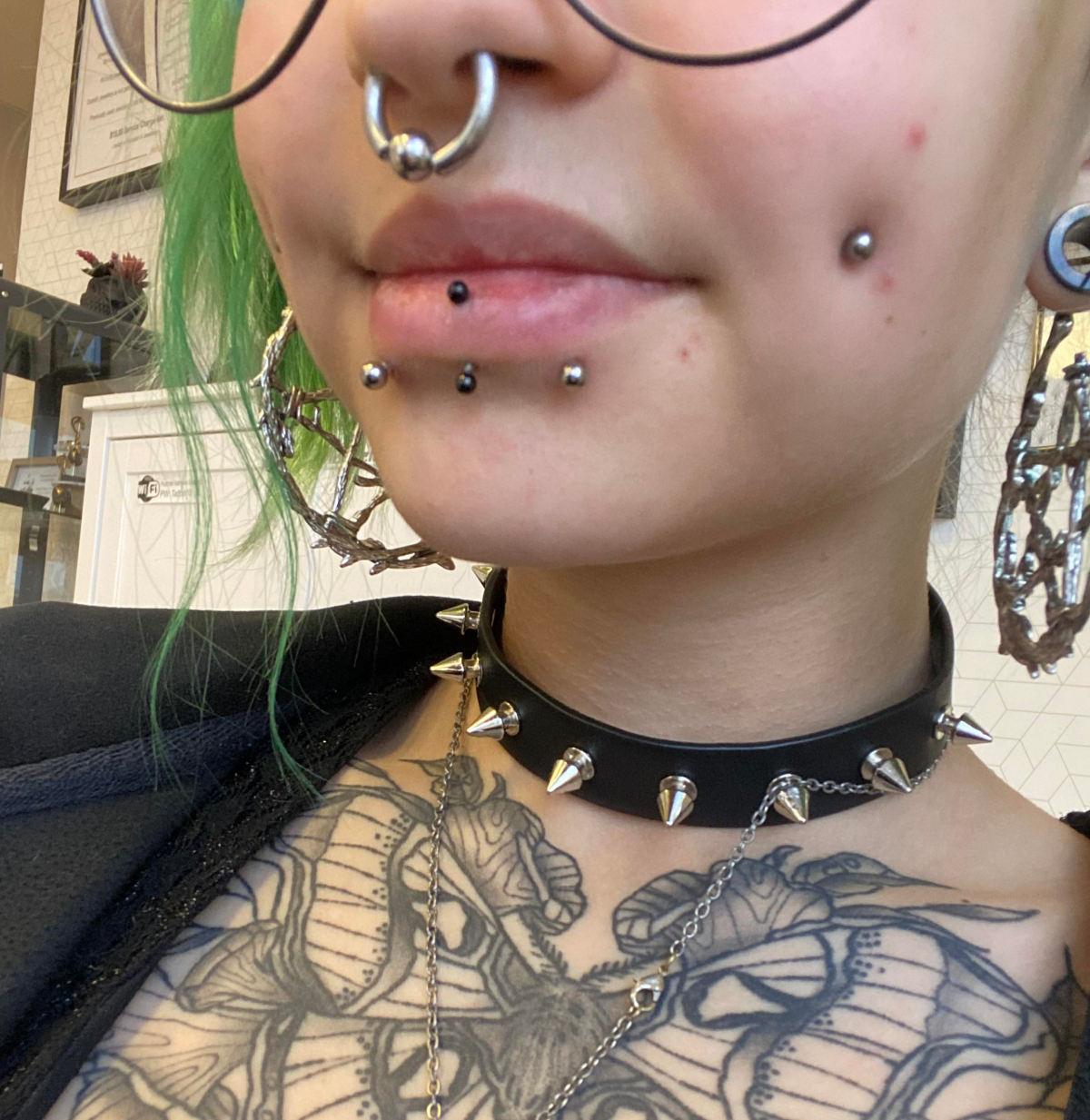
How to Eat Without Hating Your Life
Okay, this is a big one. For that first week, you need a game plan. Stick to things that don’t require a lot of chewing or opening your mouth wide.
- Go-To Foods: Smoothies (use a spoon, not a straw!), lukewarm soup, yogurt, oatmeal, scrambled eggs, mac and cheese, and protein shakes are your best friends.
- Foods to Avoid for a Bit: Anything crunchy (chips, crusty bread), tough (steak), or that you have to bite into (like a whole apple or a big burger). Spicy and super salty foods can also sting, so maybe hold off on those for a few days.
Your Aftercare Routine (Keep It Simple!)
Over-cleaning can be just as bad as not cleaning enough. Your body does most of the work; your job is just to keep things clean without causing irritation.
My Recommended Shopping List:
- Sterile Saline Wound Wash: Get this from a pharmacy (like NeilMed Piercing Aftercare). It’s just sterile saltwater in a can.
- Non-Woven Gauze: Way better than cotton balls or Q-tips, which can leave fuzzy fibers behind.
- Alcohol-Free Mouthwash: For rinsing inside your mouth.

The Daily Drill
For the outside: Twice a day, spray the saline wash directly on the piercings. Let it soak for a minute to soften any crusts, then gently pat dry with a clean piece of non-woven gauze or let it air dry.
For the inside: Simply rinse your mouth with water after you eat, drink, or smoke. You can use an alcohol-free mouthwash once or twice a day, but don’t overdo it.
What to AVOID During Healing
- Touching them! Seriously, just don’t. No twisting, turning, or playing.
- Harsh chemicals. No alcohol, hydrogen peroxide, or antibacterial ointments.
- Oral contact. To prevent bacterial exchange, you’ll want to avoid wet kissing for at least 4-6 weeks. After that, be gentle!
- Submerging them. Stay out of pools, hot tubs, lakes, and oceans. They’re full of bacteria.
Troubleshooting: Irritation vs. Infection
It’s easy to panic when things get red, but it’s important to know the difference between simple irritation and a real infection.

Irritation is way more common. The area might be a little red or swollen, and the discharge is typically clear or whitish (that’s lymph fluid). It’s usually caused by something physical—bumping it, sleeping on it, or a jewelry issue. The fix is to figure out the cause and eliminate it.
A true infection is a different beast and requires a doctor. The signs are more severe: throbbing pain, intense redness and heat, and you may even see red streaks. The discharge will be thick, yellow, or green pus and might smell bad. You might also run a fever. If you suspect an infection, see a doctor for antibiotics but DO NOT remove the jewelry, as this can trap the infection inside.
Final Thoughts
Snake bite piercings can be an awesome, safe modification when you treat them with respect. They require a commitment to proper healing and a long-term awareness of your oral health. My best advice? Find a piercer you genuinely trust. Look for a studio with a strong, transparent portfolio and tons of great reviews.
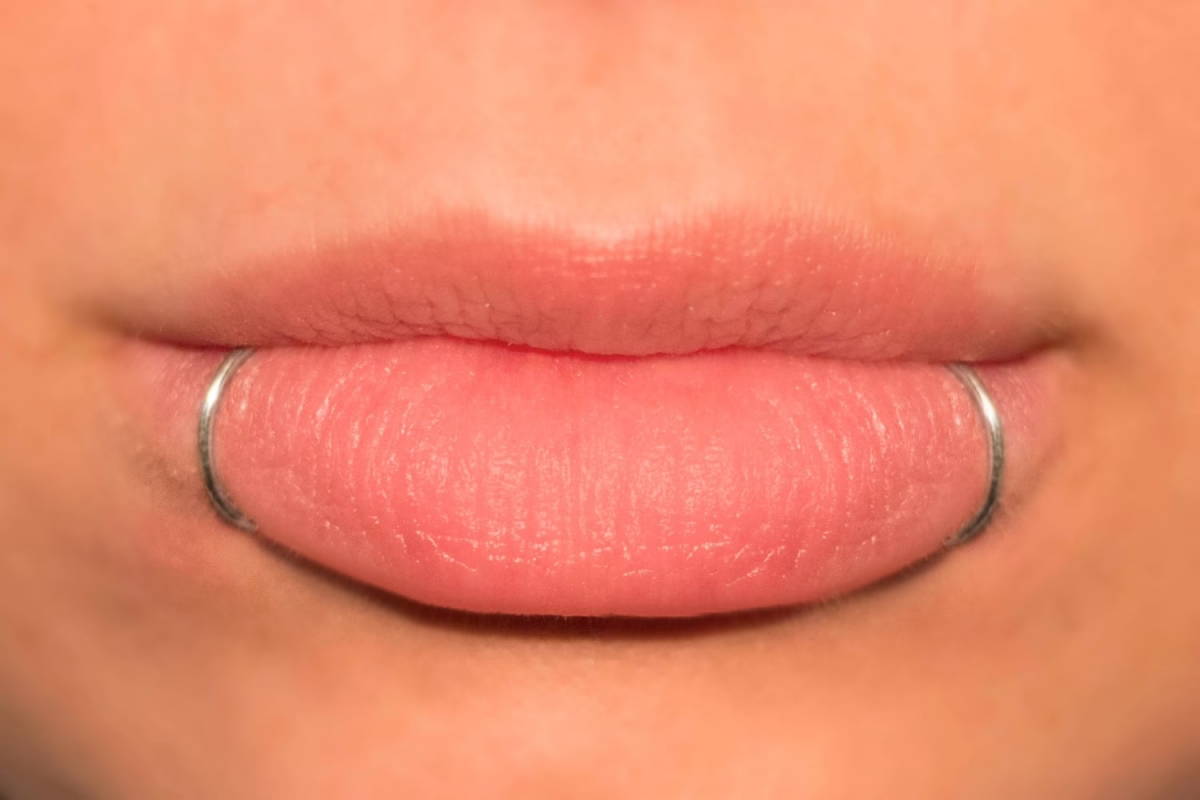
Ask them questions! A real pro will be happy to talk about their sterilization process and jewelry materials. When you’re informed, you’re not just a client; you’re a partner in the process. And that’s the secret to having piercings you’ll love for years to come.
Galerie d’inspiration
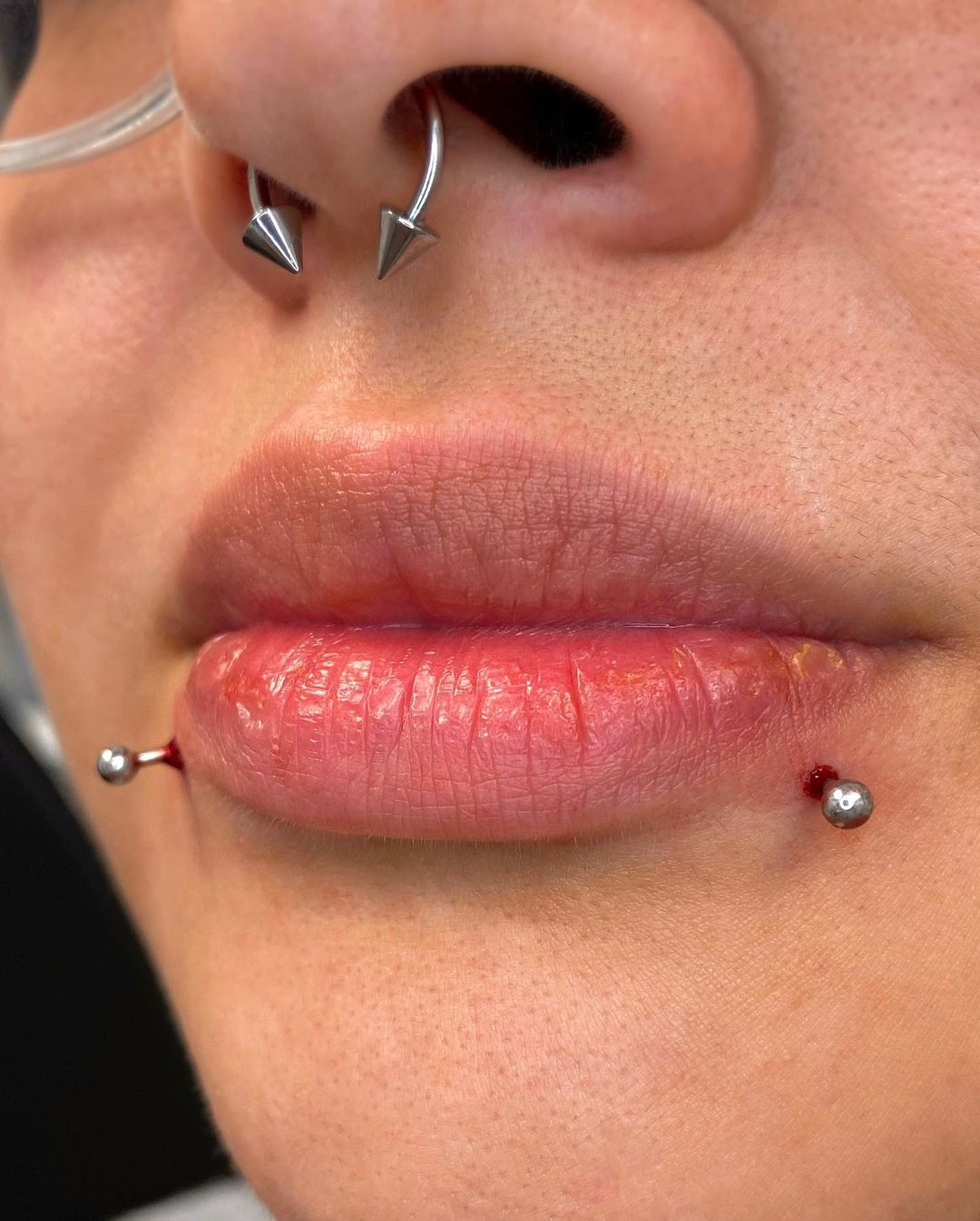

My lips are so swollen! Is this normal and what can I do?
Yes, significant swelling is completely normal for the first 3-5 days with lip piercings. A professional piercer uses a longer initial barbell specifically to accommodate this. To help manage it, you can gently suck on ice chips or drink cold water. Sleeping with your head slightly elevated can also reduce overnight swelling. The key is patience; the swelling will subside, and it’s a crucial part of the healing process before you can downsize to your permanent jewelry.
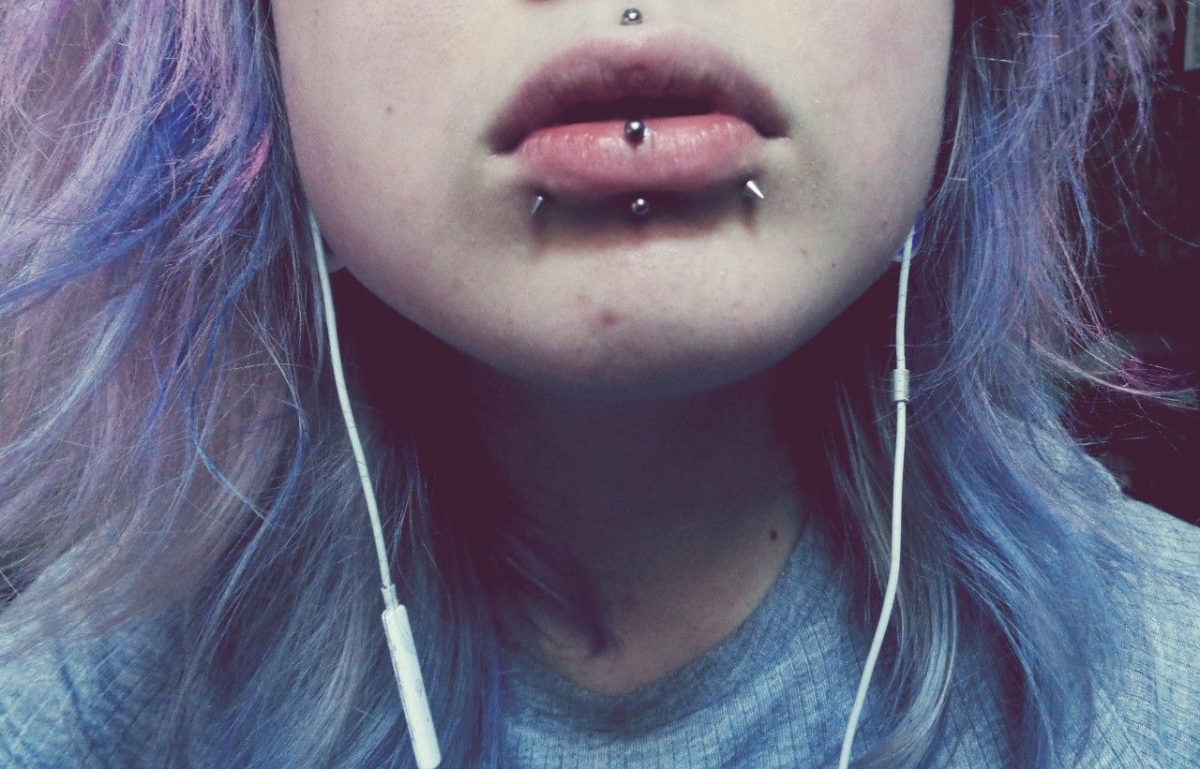
Implant-Grade Titanium (ASTM F-136): This is the gold standard for initial piercings. It’s nickel-free, lightweight, and highly biocompatible, meaning your body is less likely to react to it. It’s what top-tier brands like NeoMetal or Anatometal specialize in.
Surgical Steel: A common and budget-friendly choice, but it can contain trace amounts of nickel, which can cause irritation for sensitive individuals. It’s generally better for fully healed piercings, not fresh ones.
For a new piercing, always opt for implant-grade titanium to ensure the smoothest possible healing journey.
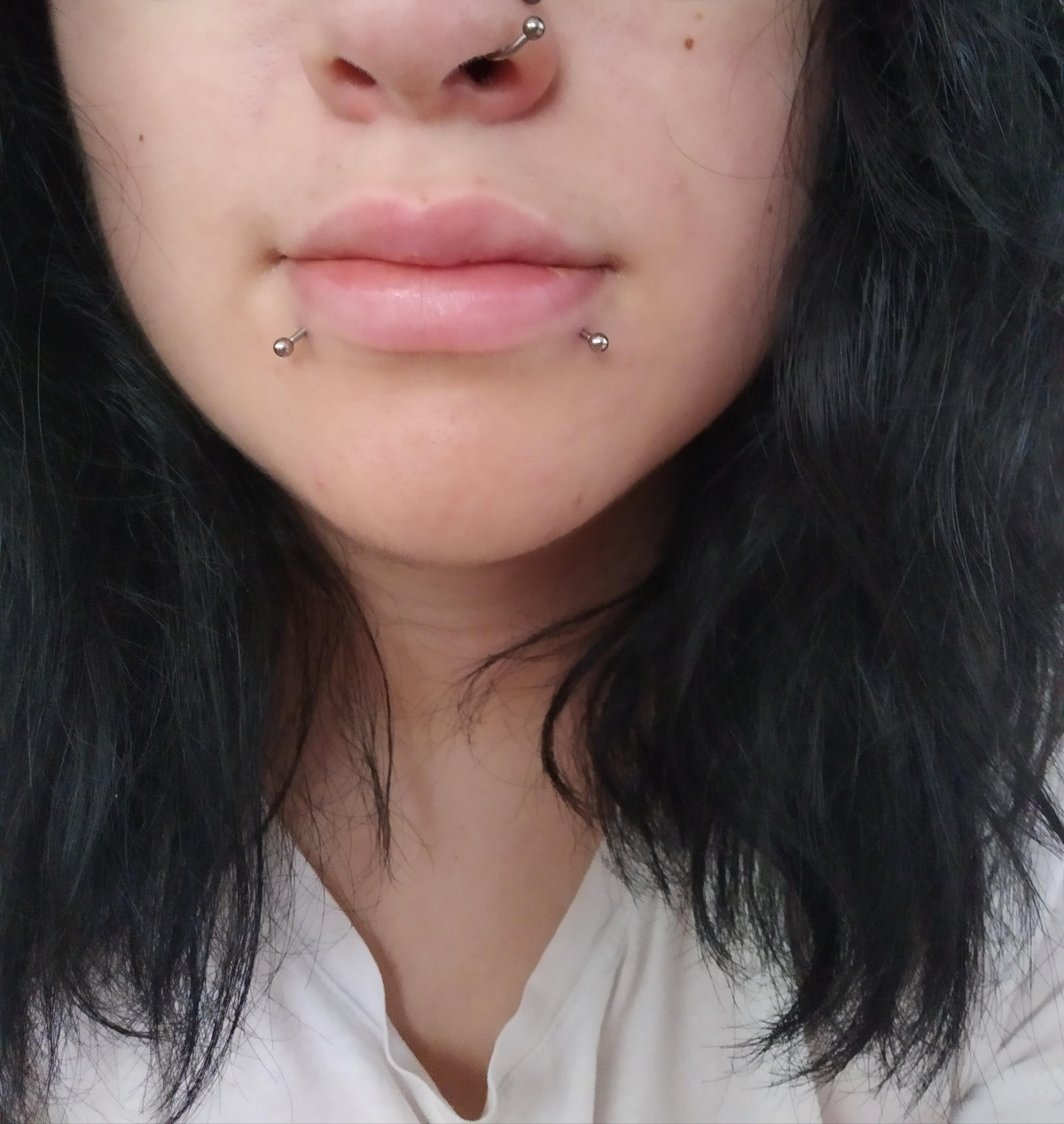
Once fully healed, about 75% of people with lip piercings choose to experiment with different jewelry styles beyond the initial stud.
After the crucial healing period (typically 2-3 months) and the mandatory downsizing of your labret bars, the fun begins. This is your chance to move beyond the simple starter studs and truly personalize your look. You can switch to snug-fitting seamless rings for a classic aesthetic, or opt for captive bead rings (CBRs) for a more pronounced style. The possibilities for stud tops are endless, from minimalist discs to sparkling gems from brands like BVLA, allowing your piercings to evolve with your style.
- Avoid playing with the jewelry with your tongue or fingers.
- Cut back on smoking and alcohol, as they can increase swelling and slow healing.
- Don’t use harsh, alcohol-based mouthwash.
- Refrain from swapping out the jewelry before your piercer gives you the okay.
The secret to a successful piercing? Minimal interference. A dedicated aftercare routine using a sterile saline solution twice a day is all you need. Your body does the hard work; your job is to keep the area clean and leave it alone.

